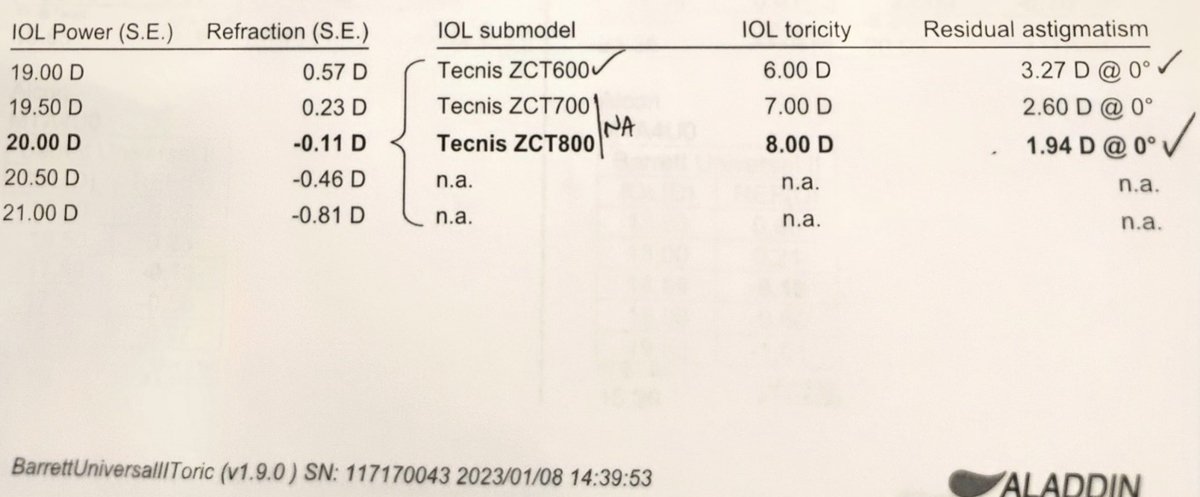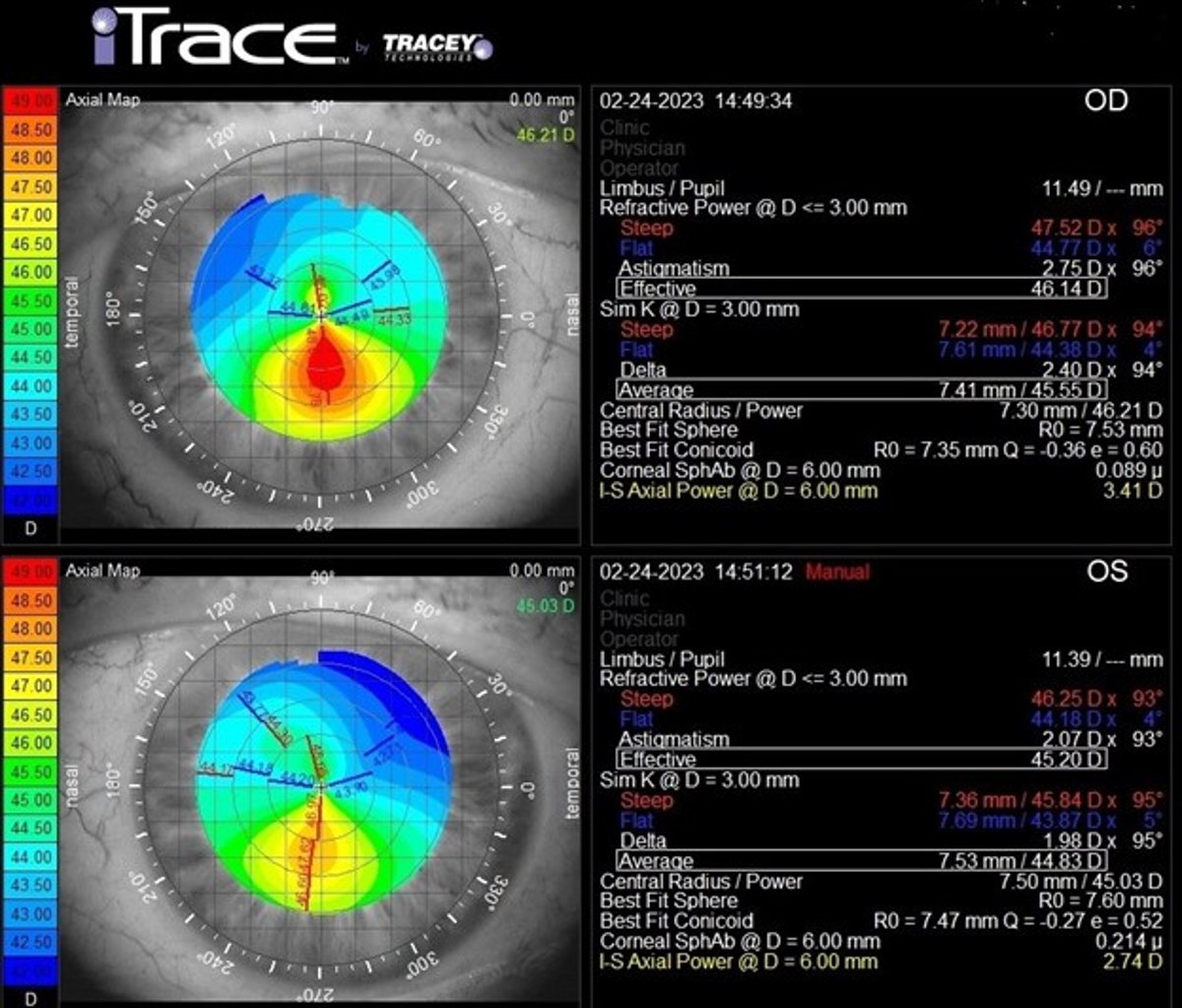BLOG: Two unusual toric cases
Key takeaways:
- A two-step femtosecond laser-guided procedure may be a good option for high astigmatism.
- Patients with keratoconus may achieve better vision with a toric IOL than with glasses.
I recently performed cataract surgery on a 79-year-old man with high astigmatism.
This patient had over 4 D of regular astigmatism in the left eye and a whopping 7 D of regular astigmatism in the right eye. The left eye was straightforward, and I implanted a Tecnis Eyhance toric IOL (DIU600, Johnson & Johnson Vision) in that eye. But for the right eye, the highest-powered toric IOLs still would not fully correct the astigmatism.

Source: Jared Younger, MD, MPH
I opted for a two-step, same-day femtosecond laser-guided procedure on the right eye. The Catalys laser (Johnson & Johnson Vision) does not allow the surgeon to program for both a toric IOL and arcuate incisions — you have to choose one or the other. But clearly, neither option alone was going to fully correct this patient’s astigmatism.

First, as I usually do with toric IOLs, I used the laser to create 1-mm radial marks based on the preoperative Cassini imaging with iris registration and performed the usual femtosecond laser-assisted cataract surgery steps. Then, I used a second laser treatment interface to create paired arcuate incisions of 60° in length, with 80% depth, at the same steep axis. In Figure 3, the intrastromal axis mark for the toric IOL and the arcuates can be seen overlapping, both at an 8-mm optical zone. The rest of the case went as planned, and I implanted another Tecnis Eyhance toric IOL (DIU600).

Postoperatively, the patient did amazingly well, with distance vision of 20/20 in the left eye and 20/25 in the right eye (0.75 D of residual astigmatism), and no distance glasses for the first time in his life.

Another unusual toric case was a 70-year-old patient with mild, stable keratoconus who presented for cataract surgery. Refraction had been stable for years, according to his referring optometrist’s note, at –4.0 +2.5 × 75° in the right eye and –4.75 +2.0 × 112° in the left eye. He had worn glasses all his life and had probably never had a topography, so no one ever diagnosed the keratoconus. Fortunately for him, the keratoconus had not progressed to significant vision loss or stromal thinning, and although there was the classic asymmetric bow tie on topography, the axis was not radially skewed, as can happen in a keratoconic eye. Also, remember that some newer-generation IOL formulae have a correction for keratoconus. I find that in cases like this, the patient can achieve much better vision with a toric IOL than they previously had with glasses.

In this case, his astigmatism was about 2.5 D, and I implanted the moderate-powered enVista toric IOL (Bausch + Lomb). This is my go-to lens for post-hyperopic LASIK and other irregular corneas that qualify for a toric IOL because it is a neutral spherical aberration lens.
Interestingly, after surgery, his uncorrected distance was very good at 20/25, but he was also J2 for near, so there is definitely an optical depth of focus contribution here. In normal corneas and also post-myopic LASIK, a negative spherical aberration lens like the Tecnis family of toric lenses is a better choice, in my opinion. Knowing that both the enVista and Tecnis platforms have excellent rotational stability and glistening-free clarity makes this a good strategy for most patients.
Collapse
